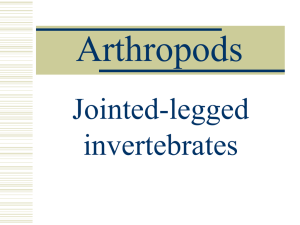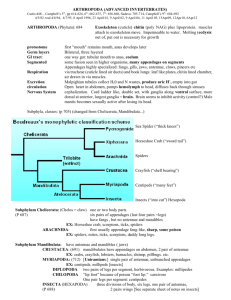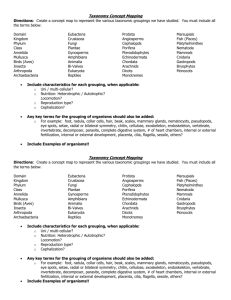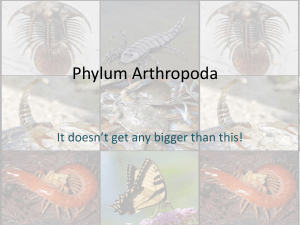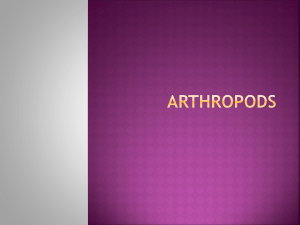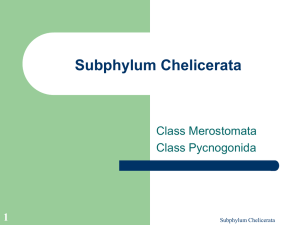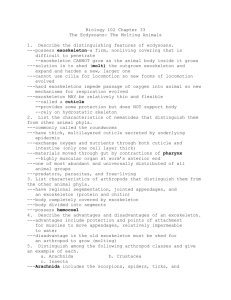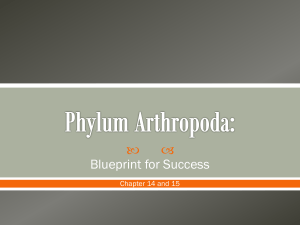Slide 1 - Effingham County Schools
advertisement
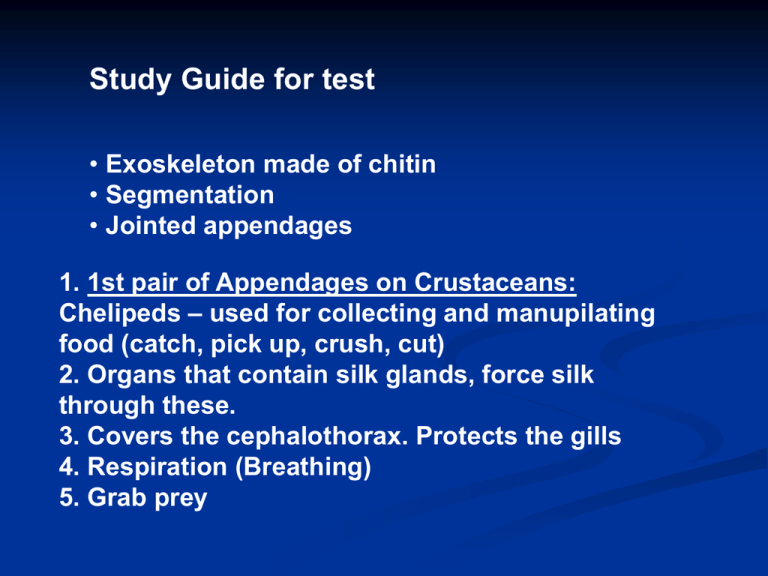
Study Guide for test • Exoskeleton made of chitin • Segmentation • Jointed appendages 1. 1st pair of Appendages on Crustaceans: Chelipeds – used for collecting and manupilating food (catch, pick up, crush, cut) 2. Organs that contain silk glands, force silk through these. 3. Covers the cephalothorax. Protects the gills 4. Respiration (Breathing) 5. Grab prey 7. Appendages that contain fangs used to stab and paralyze prey with venom. 8. Help with excretion of nitrogenous wastes 9. Chemical substances that help insects communicate. 10. Help with swimming and assist in reproduction Male – first pair in the shape of a V, also larger than female’s. 11. Sense the environment 12. A. Chelicerata B. Crustacea C. Insecta D. Chelicerata E. Myriapoda F. Crustacea G. Insecta H. Crustacea I. Crustacea J. Chelicerata K. Chelicerata 13. Incomplete – the organism look like immature adults when they hatch – for example grasshoppers Complete – the organism does not look like the adult form at all when they hatch. They go through different forms in their development – for example butterfly. Incomplete Complete Ex. Crabs, Barnacles, 14. Tongue worms, crayfish Chelicerates Crustaceans • 2 Pairs of antennae • Mandibles • Use gills or Spiracles for breathing •Mostly aquatic, some are terrestrial. •Body divided into Cephalothorax And Abdomen •Exoskeleton of chitin • Some species are parasitic •No antennae • No mandibles Mouth parts Are fang like • Use book lungs for breathing. •Mainly terrestrial Ex. Spiders, Scorpions, horseshoe crabs 15.Help with pollination – crops would not grow w/o Pollination. Lady bugs eat aphids that destroy crops In Asia and other countries insects are a delicacy. 16. Vectors of diseases like West Nile, Malaria, Dengue fever (mosquitoes), Destroy crops (Locusts) 17. By doing dances – Waggle dance – food is farther away from the hive Round dance – food is fairly close to the hive. Also use pheromones – chemical substances. 18. Vector 19. Mandible 20. Tracheal tubes 21. Chitin 22. Pheromones 23. Decapods 24. Castes
